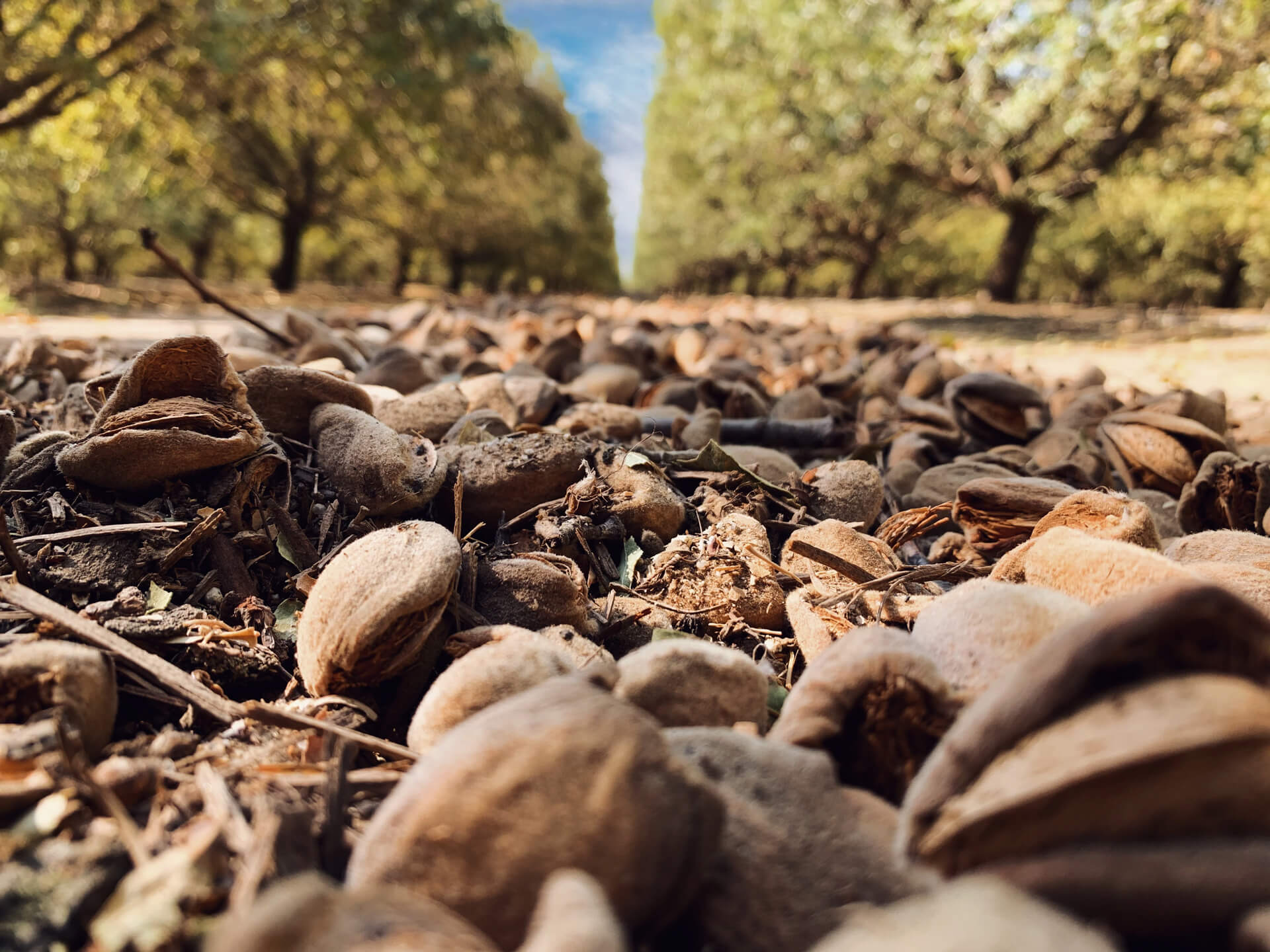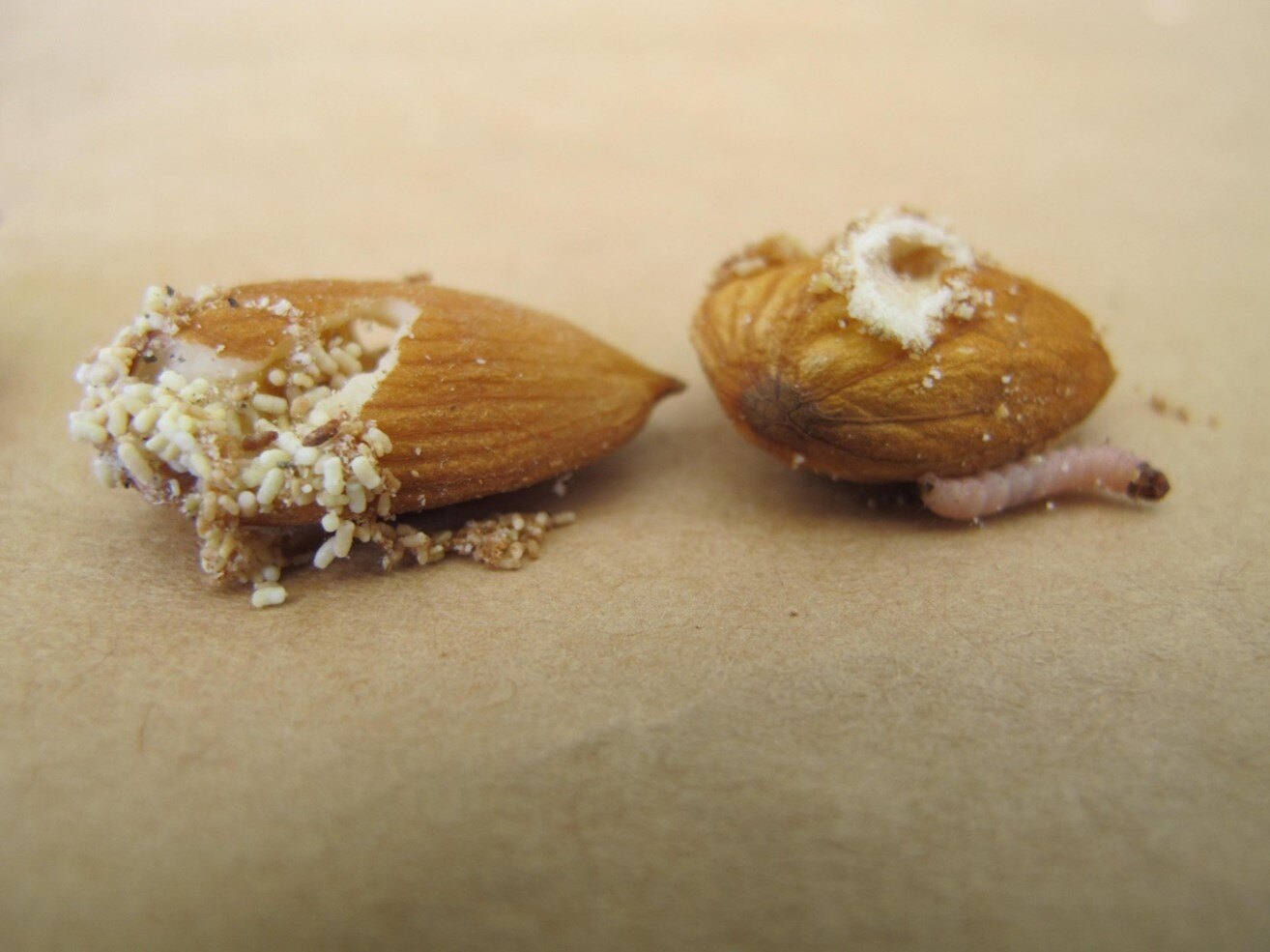


Almond harvest is now underway in California, and with it comes the time for assessing the extent of damage by navel orangeworm (NOW) and other pests and pathogens. Guidelines for best practices to assess this season’s crop quality are reviewed in this article.
Collecting nut samples before transporting them for processing is crucial for growers and Pest Control Advisers (PCAs), offering multiple benefits. First, by analyzing nut damage, growers and PCAs can determine the extent and sources of damage, providing valuable insights into the effectiveness of their integrated pest management (IPM) program. This information is essential for planning any necessary adjustments for the next season.
In addition, in-field sample data from early harvested varieties can guide decisions on whether additional treatments are needed to protect later varieties during the current season. The data collected also provides long-term benefits, offering insights on a block-by-block and year-by-year basis. This helps in understanding which areas are most vulnerable to pests and diseases and the conditions that lead to increased pest pressure, enabling more targeted and effective management strategies.
To ensure accurate results, it’s recommended to obtain a sample of at least 500 nuts per block, ideally from multiple locations within the orchard. Many pests, including NOW often exert varying levels of pressure across different areas; therefore a representative sample from each block is crucial for accurate damage assessment. After collecting, nuts should be cracked open to inspect for signs of damage. If immediate cracking isn't possible, collected nuts can be stored in the freezer to preserve them.
By following these practices, growers and PCAs can better understand pest dynamics and enhance their IPM strategies for healthier crops and improved yields.
Kernel damage in almonds can result from various issues, but damage caused by navel orangeworm is often distinguishable from that caused by other insects, diseases, and disorders. NOW larvae can feed in groups of multiple larvae per nut, and their damage is characterized by extensive feeding on the kernel including the skin, along with copious amounts of large frass and webbing.

Copyright 2024, Suterra
The distinctive nature of NOW damage has historically made it unlikely for growers to confuse it with damage caused by other common pests. However, a NOW infestation can mask the damage caused by less destructive pests, such as peach twig borer (PTB) and Oriental fruit moth (OFM), as well as the recently detected carpophilus beetle. In the case of PTB and OFM, their damage can be recognized by shallower feeding channels in nuts, much less frass, and no webbing.
A newly detected pest to be aware of in California is the carpophilus beetle, Carpophilus truncatus (Coleoptera: Nitidulidae). This beetle and its larvae also feed on the kernel, but unlike NOW, they leave the kernel skin largely intact or with minimal damage. The damage from carpophilus beetles is marked by fine, white powdery residue from frass and feeding on the kernel. Additionally, large numbers of adults and larvae—often more than ten per nut—may be found within the damaged nuts.
Other forms of insect damage may also be detected in almond harvest samples. For example, ants can hollow out the nut, leaving just the skin, and leave white powdery residue as they feed on the kernel, which can cause difficulties in distinguishing from carpophilus feeding. Feeding by leaffooted or stink bugs appears as dark spots or gumming on the almond kernel.
By recognizing the distinctive signs of damage from each pest, growers can better assess the health of their crops and implement targeted integrated pest management (IPM) strategies.
If harvest samples or grade sheets reveal economic levels of pest damage, integrated pest management (IPM) practices should be thoroughly evaluated, and any available adjustments made to prevent future damage. For navel orangeworm, the foundation of the IPM program is pheromone-based mating disruption such as Suterra's liquid pheromones and aerosol pheromone solutions. Suterra's mating disruption products release synthetic copies of a species' sex pheromone into the environment, inhibiting the ability of males to locate females and successfully mate. This results in reduced reproduction, fewer pests, and less crop damage.
Mating disruption is species-specific, does not leave harmful residues on crops, and is safe for the environment and beneficial species. Suterra offers two proven mating disruption solutions for navel orangeworm that are widely used by growers: aerosol Puffers® (available for conventional and organic production) and a microencapsulated sprayable formulation (CheckMate® NOW-F).
Please visit Suterra’s product pages for additional details and contact our team to learn more about our monitoring and mating disruption solutions.
*Information provided herein does not constitute a recommendation. Always consult with your licensed Pest Control Adviser to determine the best pest management practices and timings for your operation. Adhere to state and local regulations and the current pesticide label and check with your organic certifier.